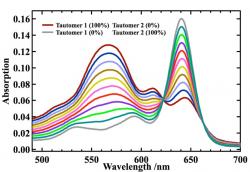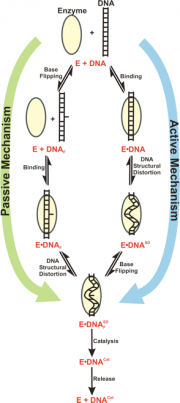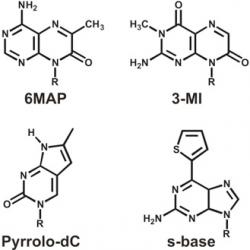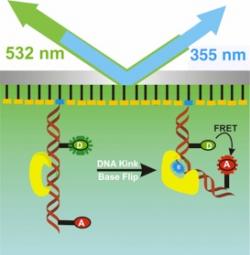
Photophysical, Electrochemical, and Spectroelectrochemical Characterization and Solvent Effect on the Tautomerism of Free-Base Corrole
We investigate the photophysical and electrochemical properties of corrole molecules and how solvent molecules can influence the ability of this molecule to capture light and mimic photosynthesis. A detailed understanding of the photophysical, electrochemical and spectroelectrochemical properties of these molecules is important in order to use porphyrins and corroles in molecular, electronic and photonic devices.

Photophysical Characterization of Fluorescent Base Analogs to Study DNA Base Flipping
Several fluorescent base analogs (FBAs) have been synthesized during the last four decades. The fluorescence properties of these FBAs can be used to probe base flipping, which can be induced from the interaction of an enzyme with an FBA-substituted DNA. In this project, we are developing assays to monitor base flipping mechanism in DNA-enzyme complexes in real time using FBAs.


Single Molecule Assay to Study the Base Flipping Mechanism of DNA Repair Enzymes
We are developing single molecule assays to observe the base-flipping process in real time using single molecule fluorescence experiments and a fluorescent base analog (FBA) to probe base flipping. These experiments will allows us to learn more about how the enzyme repair mechanism works and how base flipping contributes to the repair process.
Updated: July 07, 2023